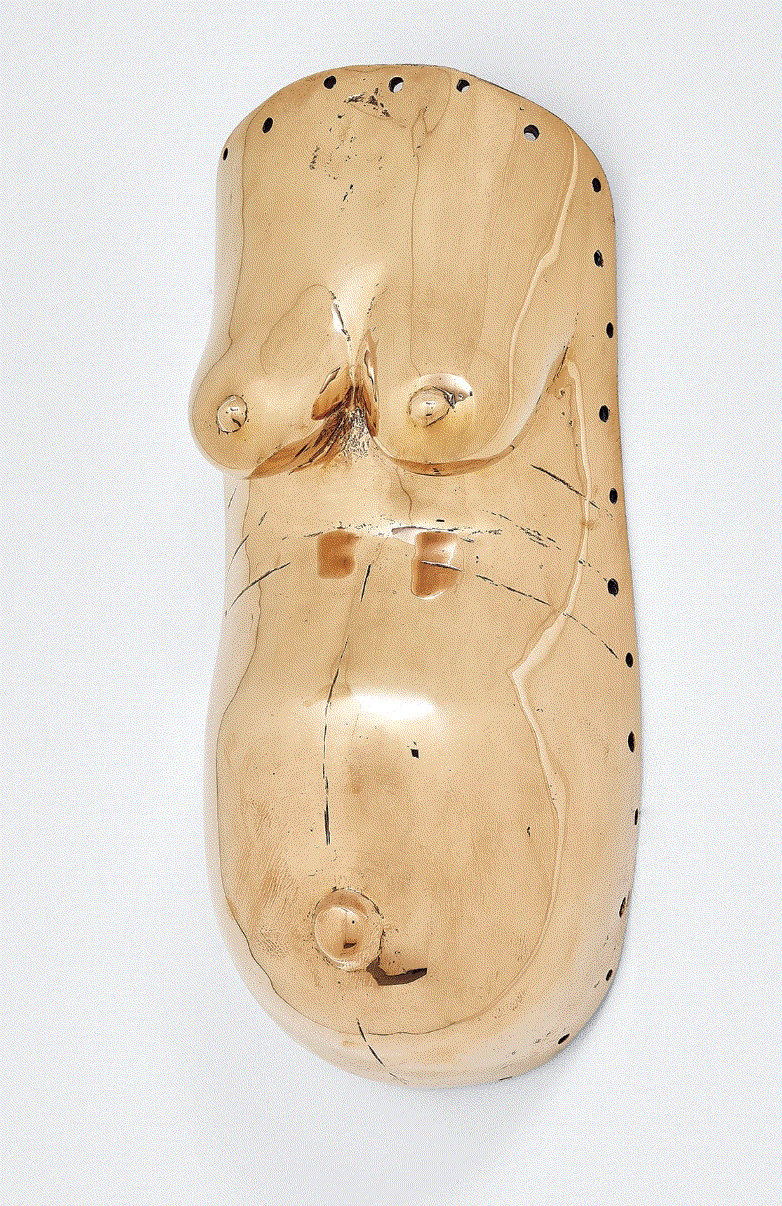
Duende Art Projects was proud to present an exceptional Makonde body mask in its inaugural exhibition "Threads". Such female body masks were an important part of the initiation rituals of the Makonde peoples of northern Mozambique and southeastern Tanzania. Both boys and girls underwent a period of seclusion, generally six months, during which they learned traditional songs and dances, and were taught various practical activities. These initiation rites involved male circumcision and teachings into the secrets of gender. Initiates were taught the rules of adult behavior, and the rights and obligations of married life (including sexual activities). The celebrations that accompanied the coming-out ceremonies of the initiates involved the performance of several masked dancers (midumu, sing. ndimu).

Anonymous Makonde artist (Mozambique/Tanzania), body mask. Early 20th century. Wood. 39 x 28 cm.
This female body mask was part of the costume of a special ndimu masker called amwalindembo, which represented a young pregnant woman. This exceptional mask type was represented with full breasts and a swollen abdomen decorated with finely etched Makonde body scarifications. These naturalistic masks were always worn by a male masquerader together with a matching female mask. The amwalidembo performed a sedate dance, usually accompanied by a male ndimu mask, and dramatized the agonies of childbirth. Displaying the rounded silhouette of a pregnant female form, the present mask is awash with connotations of fertility and femaleness.

Sherrie Levine - "Body mask" (2007). Cast bronze. 55,5 x 22,5 cm. Image courtesy of Phillips.
The American artist Sherrie Levine (1947) made a polished bronze cast of a similar Makonde mask for her 2007 work “Body Mask”, presented at the Whitney Biennial in 2008. Typical for Levine’s acclaimed appropriation technique, she stripped the object of its ceremonial significance and presented it as an object of desire, highlighting the materialistic culture of our consumer driven contemporary society. With her polished and amplified rendition of the wooden original, Levine’s “Body Mask” re-writes the cultural memory ascribed to the object. In the overtly feminine work the artist deconstructs the Makonde ritual of men assuming the female figure. Questioning the 'tribal' arrogation of the female physique, Levine strips the object of its cultural weight.Through the vision of a commodity and object based society, Levine transforms the culturally weighted symbol into a finished derivative artistic entity. Remodelling a ritualistic object into a different form of the same, this time for reasons of luxury and wealth as opposed to gender and fertility, the artist astutely repositions the object in the eye of the beholder. Yet, while Levine's 'Body Mask' was cast in an edition of 12 identical copies, the present wooden body mask, separated in time by a century, is a unique testament of the original creativity of the Makonde.
